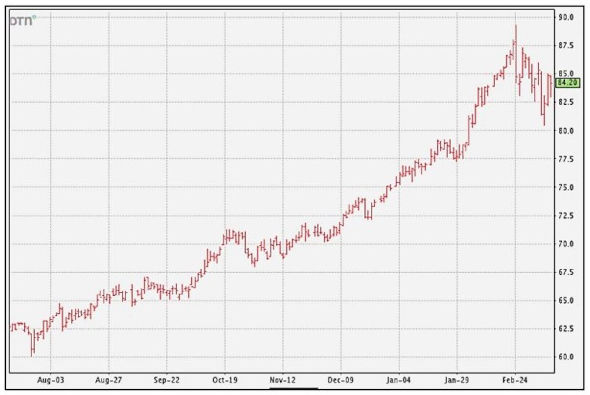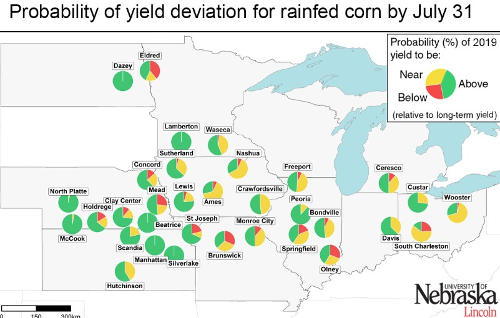By Bradley Zwilling, Brandy Biros, and Dwight Raab
Illinois FBFM and Department of Agricultural and Consumer Economics
University of Illinois
Financial liabilities are a present obligation arising from past decisions. While some operators can operate without borrowing, many farm operations cannot operate with the use of borrowed capital. This article considers the structure of average debt obligations on the balance sheet and trend of that structure over a five-year period using data provided by the Illinois Farm Business Farm Management Association.
Chart 1 depicts the absolute dollar amount of average current, intermediate and long-term liabilities from 2013 to 2017. Farms represented are predominantly grain farms but include hog, beef and dairy operations. There is an 18% increase in average current liabilities or $56,373. A 19% decrease in average intermediate liabilities or $(19,061) and a 28% increase in long-term liabilities or $81,410. The change in percentage terms masks the dollar amount change as the current and long-term liabilities are at a significantly higher level than the intermediate term liabilities.

Chart 2 depicts the same information as Chart 1 except that it is on a ‘per acre’ basis which normalizes the liabilities by the number of acres in the farm. The average number of acres from this five-year span of time runs from a low of 730 acres in 2013 to a high of 786 acres in 2017 – so the range is fairly small. This tells just a bit different story in that there is a 10% increase in average current liabilities or $41/acre over the five-year period. There is a 25% decrease in average intermediate liabilities or $(34)/acre and a 19% increase in long-term liabilities or $75/acre. Both Chart 1 and Chart 2 show a trend to lesser levels of intermediate term debt and increasing levels of current and long-term debt.
Charts 3 and Chart 4 consider grain farms exclusively and as such is a subset of the data used in the first two charts. Charts 3 and 4 use data from only 2017. Further, these two charts segment the three classes of liabilities into five age groups.
Chart 3 tells of current liabilities increasing markedly as operator age increases from under age 30 to about age 50 before decreasing. Long-term liabilities show a similar pattern but increase at a quicker rate than do current liabilities. Intermediate liabilities increase into the age 41-50 age group but then decrease beyond age 50. As noted in Chart 1, the dollar level of intermediate term liabilities is far less than that of current or long-term liabilities.

Chart 4 divides the three classes of liabilities by the number of acres operated and also segments the date into five age groups. The number of acres in each of the age groups is: Under 30 – 434 acres, Age 31 to 40 – 693 acres, Age 41 to 50 – 1007 acres, Age 51 to 60 – 946 acres and Over Age 60 – 711 acres. Current liabilities increase from the Under Age 30 group into the Age 41-50 group and remain flat prior to decreasing into the Over Age 60 group. Average intermediate term liabilities per acre remain much the same for all five age groups. Average long-term liabilities are at their highest levels before decreasing significantly into the Age 41-50 group where they remain steady prior to decreasing into the Over Age 60 group.
Summary
We have noted in the Illinois FBFM data a long term trend of funds borrowed being larger than principal paid. In only one of the past twenty years has the opposite been true. This may be supported by the consolidation of farm operations in Illinois resulting in an increasing number of acres operated. An increasing number of acres operated points to a naturally increasing amount of current liabilities for those making use of borrowed capital for their operating notes. The trend to a larger share of rented acres being cash rented would add to the increased need for borrowed capital to operate.
The authors would like to acknowledge that data used in this study comes from the Illinois Farm Business Farm Management (FBFM) Association. Without Illinois FBFM, information as comprehensive and accurate as this would not be available for educational purposes. FBFM, which consists of 5,500+ farmers and 65 professional field staff, is a not-for-profit organization available to all farm operators in Illinois. FBFM field staff provide on-farm counsel along with recordkeeping, farm financial management, business entity planning and income tax management.